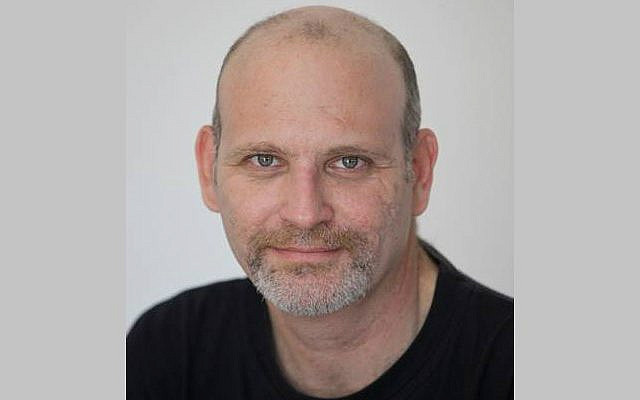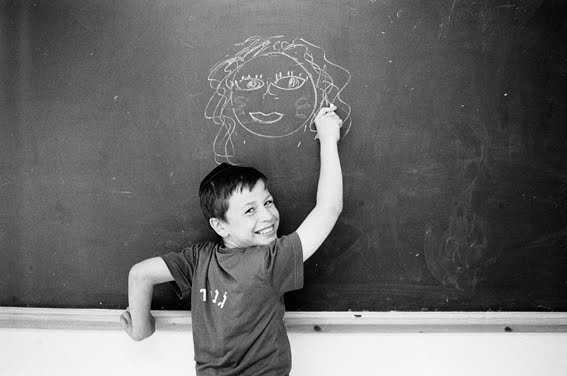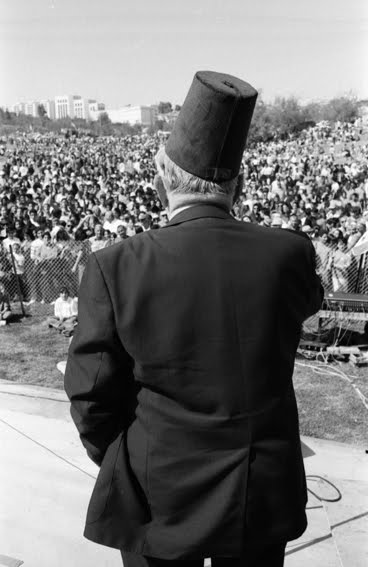Esteban Alterman
Click the button below to make a donation in memory of Esteban Alterman
Published in The Times of Israel on June 28, 2020

Farewell Esteban Alterman, elegant photographer of the Zionist story
Esteban’s portraits were beautiful but subtle: You had to look at them again and again, like a fine painting, to appreciate what you’d missed. Now, it is he who will be missed
My friend Esteban Alterman died yesterday, after a 13-year battle against ALS.
We worked together in the early years of the Jerusalem Report, which was founded in 1990, just as Israelis were learning how to use gas masks in anticipation of the imminent Gulf War. An extraordinary group coalesced in the office overlooking “Kikar Hahatulot” off of Jaffa Road. There was Hirsh Goodman and Zev Chafets and David Horovitz and Sharon Ashley, Stuart Schoffman and Ehud Yaari and Calev Ben-David and Isabel Kershner, Eric Silver and Gershom Gorenberg and Tom Sawicki and Netty Gross and and Hanan Sher and Ronnie Hope and Avi Hoffman and Leslie Susser and David Green and Avi Katz and Michael Elkins and even Natan Sharansky (Jewish World editor). Each of them either came accomplished or would later go on to distinguished careers in journalism and public service.
The vision that brought everyone together was that Jerusalem deserved a world-class publication. Charles Bronfman provided backing, and tens of thousands of English-speaking Israelis and Diaspora Jews became devoted subscribers.
Into this heady mix of talent and energy and ambition appeared a shy but quietly determined new immigrant from Argentina named Esteban Alterman. Do we need a photographer? he asked.

Schoolboy, Chernobyl radiation victim, Kfar Chabad, June 1994. The photo hangs in The Times of Israel conference room. (Esteban Alterman)
It was easy at first to miss the intensity of this seemingly easy-going Argentinian, whose Spanish English marked him a stranger among the American and British and South African immigrants at the Report. But we soon learned to cherish Esteban’s humane and passionate eye.
Esteban and I traveled together on assignment, every week to another corner of Israel, uncovering an endlessly complex society. For both of us the mission was two-fold: to capture a good story of course, but no less important, to teach ourselves about Israel. We were both new immigrants seeking our place here. And in chronicling Israeli stories, we were learning to own the Israeli story.

Teddy Kollek, Jerusalem mayor, April 1993. The photo hangs in The Times of Israel conference room. (Esteban Alterman)
The 90s were a thrilling time on the Israeli roller-coaster. Israel was, once again, drastically reinventing itself. A million new immigrants were landing from the former Soviet Union, the Israeli airforce airlifted an entire community of Jews from Ethiopia, the first rockets were falling on the Israeli home front, start-up nation was replacing dysfunctional socialist nation, and the First Intifada morphed into the Oslo process, and with it the first wave of suicide bombings and the Rabin assassination.
Esteban and I searched for the unexpected but typically Israeli stories that would help us understand what it was that had brought us here in the first place: the Russian classical pianist who took breaks from his work as a garbage collector in the northern town of Carmiel to tour Europe as a celebrated classical pianist; the ultra-Orthodox anti-Zionist who became the head of a medical team retrieving body parts at scenes of terror attacks; left-wingers who became right-wingers and right-wingers who became peace activists and bohemians who became ultra-Orthodox, a whole people in quest of identity and purpose.
We looked for the contradictions that were inevitable in a society built on ingathering immigrants from a hundred countries, with all their varied experiences and opposing ideas about the nature of a Jewish state.

Roni Levy, Israel Likud party activist, beneath a mural of Likud founder Menachem Begin. His vegetable stand in Jerusalem’s Mahaneh Yehudah market, December 2002. The photo hangs in The Times of Israel conference room. (Esteban Alterman)
We went everywhere — to Gaza and Nablus, crossing back and forth between Israeli and Palestinian Hebron. No place or situation was beyond limits. We were seeking the ultimate Israeli story, the peak moment on the rollercoaster. When Hezbollah bombarded northern Israel, we drove to Kiryat Shmona and sat on a rooftop with a father and son who were ignoring army orders to descend into a shelter and instead drank beer and watched the sound and light show, keeping score of katyusha hits and misses. (“They’re getting rusty!”)
At every stop, we searched for the best humus, because that too was part of our Israeli education. And, like the good Israelis we were trying to become, we would argue about how each meal compared to previous humus experiences.
Esteban and I shared the same romantic obsession: we were in love with the Zionist story. We sought out improbable love stories that told a larger story about Israel — like the marriage between hawkish politician and former IDF commander, Raful Eitan, and left-wing Meretz politican Ofra Meirson, whose politics drove each other mad and who loved each other all the more for their passionate commitments.
Esteban’s portraits were beautiful but subtle: you had to look at them again and again, like a fine painting, to appreciate what you’d missed. Like his photograph of Raful and Ofra: Esteban’s eye caught Ofra’s anger at Raful’s politics of the jungle and Raful’s exasperation with her politics of naivete. But what you see beyond the politics is the essence of their love story, the essence of the Israeli story: two people joined together, from opposite ends of the spectrum, in a shared commitment to protect this place.
Thirteen years ago, Esteban was diagnosed with ALS. His descent into silence was gradual. Around five years into the illness, he was confronted with the terrible decision of whether to accept a feeding tube in his stomach. I asked him whether he might consider ending it now. After all, once the tube went in there was no way back. You were condemned to life imprisonment in your inert body, the ultimate solitary confinement.
Esteban said he had made up his mind to continue. He wanted to see his children grow, to see them in army uniform, to see them under the chuppah. He loved life too much to pass on any of it, regardless of the price. Even if his hands could no longer work a camera, his eye needed to continue seeing and recording.
In our weekly visits, we would discuss the latest news from Israel and also from Argentina, where the precarious situation of its Jews increasingly preoccupied him. He keenly followed the rise of anti-Semitism around the world, and felt grateful that his children were growing up in Israel.
We talked about one last road trip, along Road 90, Israel’s longest road, stretching from the Lebanese border to Eilat. Esteban loved Road 90 and before he got sick had begun a quirky project photographing bus stops along the highway. Needless to say, we never made it back on the road. But one day, Esteban gave me a gift: a framed poster of bus stops along Road 90.
We began meditating together. We focused on the irritating noise of the machine that was keeping him alive, meditating on the whoosh, imagining the sound of a crashing wave.
He told me: “I can travel to the farthest points in the universe with my mind.” He described a sense of wondrous expanse, able to leave his body and explore the cosmos.
As it became increasingly difficult for Esteban to speak, he would painstakingly write me messages on his ALS-adjusted laptop. Sometimes it could take him five minutes or more to get down a simple sentence, but he persisted, wanting to be precise. One morning, he was having difficulty with the system and it took him an especially long time to type out a message. When I read it, I was disappointed. “I’m ok,” he’d written. And then I marveled at the effort it took to get out those words and how important it was to him to keep the communication going.
In the last few years, Esteban drifted into silence, and refused to see friends. He wasn’t only trying to protect himself from our pity, but trying to protect us from his slow suffocation. His wife, Alexandra, and his children, Tamar and Yonatan, and his devoted caregiver, Lanci, taught us all the meaning of sacrificial love.
Esteban died yesterday — “finally,” I am tempted to blasphemously write. I saw him one last time, a year ago on the eve of Rosh Hashanah. I came unannounced, knowing that if I asked his permission, he would likely say no. I told him I loved him; he blinked in response. A last road trip together, through the terrible and wondrous cosmos.
ABOUT THE AUTHOR
Yossi Klein Halevi is a senior fellow at the Shalom Hartman Institute, where he is co-director, together Imam Abdullah Antepli of Duke University and Maital Friedman, of the Muslim Leadership Initiative (MLI), and a member of the Institute’s iEngage Project. His latest book, Letters to My Palestinian Neighbor, is a New York Times bestseller. His previous book, Like Dreamers, was named the 2013 National Jewish Book Council Book of the Year.